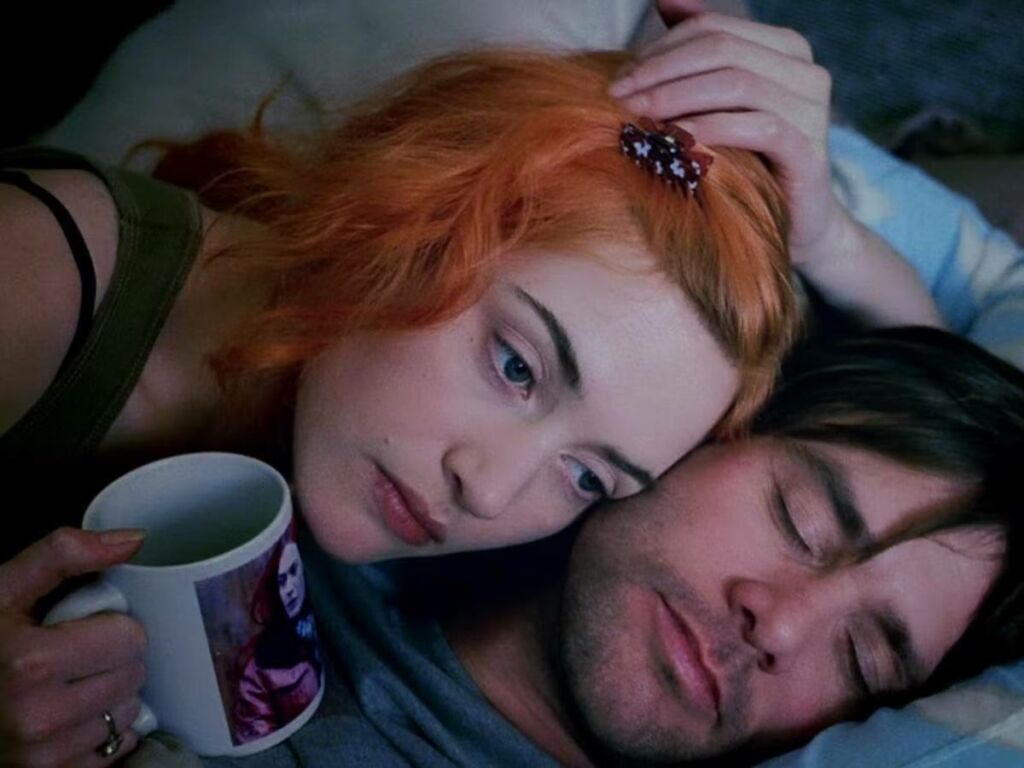‘Eternal Sunshine of the Spotless Mind‘ is one of the most enigmatic movies in the history of cinema. Released in 2004, the movie stars Jim Carrey and Kate Winslet in the lead roles and follows the story of a couple who, after a tumultuous relationship, decide to erase their memories of each other. However, as the story progresses, it becomes clear that things are not as simple as they seem.
The Charlie Kauffman movie is a complex meditation on memory, love, and loss, and its ending has been the subject of much discussion and debate. Its ending is both hopeful and melancholic, suggesting that love is both beautiful and painful. The movie suggests that memory is an integral part of who we are and that we cannot simply erase our past. In the end, the movie is a celebration of the human spirit, and its ability to love and endure, even in the face of pain and loss.
Read more: Kate Winslet Calls Out People Who Body-Shamed Her For ‘Titanic’
‘Eternal Sunshine Of The Spotless Mind’: What Happens To Joel And Clementine?

The ending of ‘Eternal Sunshine Of The Spotless Mind‘ is a bittersweet moment that encapsulates the movie’s central theme: the transience of human relationships. The film’s ending can be interpreted in several ways, but one of the most common interpretations is that it represents the idea that true love can never be erased, even if our memories are. The “Meet me in Montauk” note that Clementine leaves for Joel is also significant in that it suggests that their love story is cyclical. Montauk is where Joel and Clementine first met, and it’s where they begin their journey anew. It’s as if their love story is destined to repeat itself over and over again, regardless of what happens in their lives. Another interpretation of the ending is that it represents the idea that memories are an integral part of who we are, and erasing them is not the answer to our problems.
The corridor scene at the end of ‘Eternal Sunshine Of The Spotless Mind‘ is one of the most poignant and emotional moments in the film. In this scene, Joel and Clementine are running through a seemingly endless corridor, trying to escape the memory-erasing procedure that is taking place. This scene is significant in that it represents the struggle to hold onto memories, even in the face of pain and heartbreak. Joel and Clementine are desperately trying to hold onto their memories of each other, even as they are being erased. The final moments of the corridor scene, where Joel and Clementine collapse into each other’s arms and embrace, are some of the most powerful in the film. As they hold each other, the world around them fades away, symbolizing the final erasure of their memories. However, their love remains, and it is this love that gives them the strength to endure even the most painful moments.
In case you missed: ‘The Last of Us’ Season 1 Ending Explained: Why Does Joel Lie To Ellie? Does She Find Out The Truth?
The Meaning Behind The Movie’s Title

The title of the movie, Eternal Sunshine of the Spotless Mind, is taken from a line in Alexander Pope’s poem ‘Eloisa to Abelard.’ The full line reads: “How happy is the blameless vestal’s lot! / The world forgetting, by the world forgot / Eternal sunshine of the spotless mind! / Each pray’r accepted, and each wish resign’d.” The title suggests that the movie is concerned with the idea of forgetting, and the possibility of a mind that is completely free of memory and regret.
However, the movie ultimately suggests that this is not possible. Joel and Clementine try to erase their memories of each other, but they cannot escape their feelings. The memories come back, and they fall in love all over again. The title is thus a kind of ironic commentary on the movie’s themes. The “eternal sunshine” of the spotless mind is impossible to achieve because memory and emotion are too deeply intertwined. The movie suggests that we cannot simply forget our past, but must learn to live with it and accept it.
You might also like to read: “Why Am I Waking Up To This Bulls**t”: Jim Carrey Death Hoax Leaves Fans Fuming






